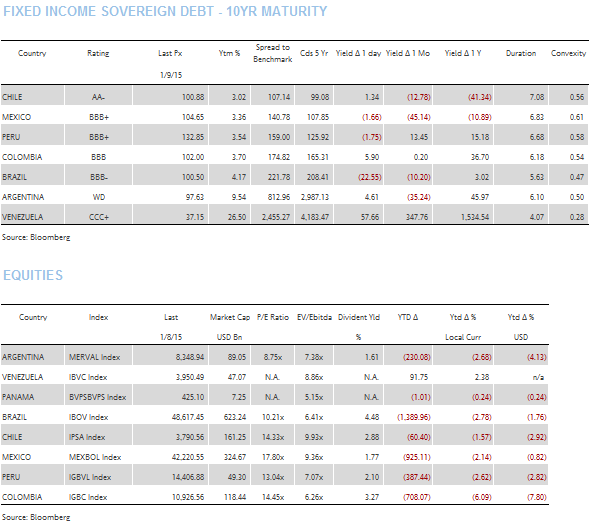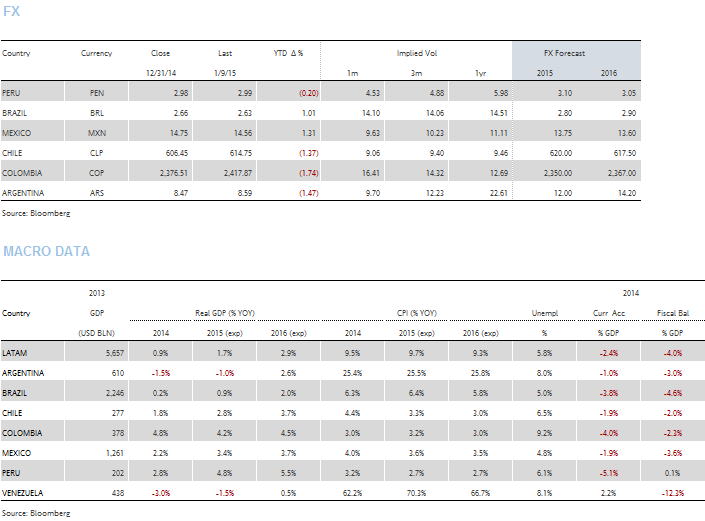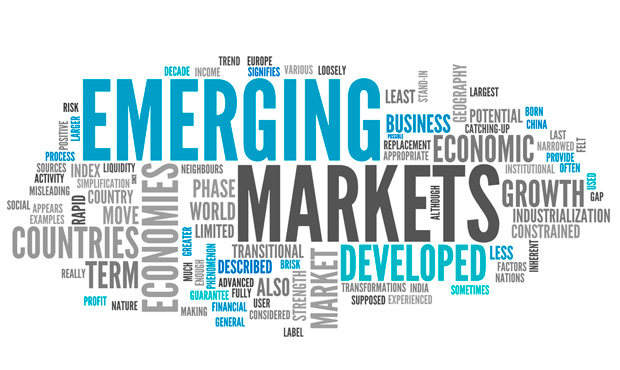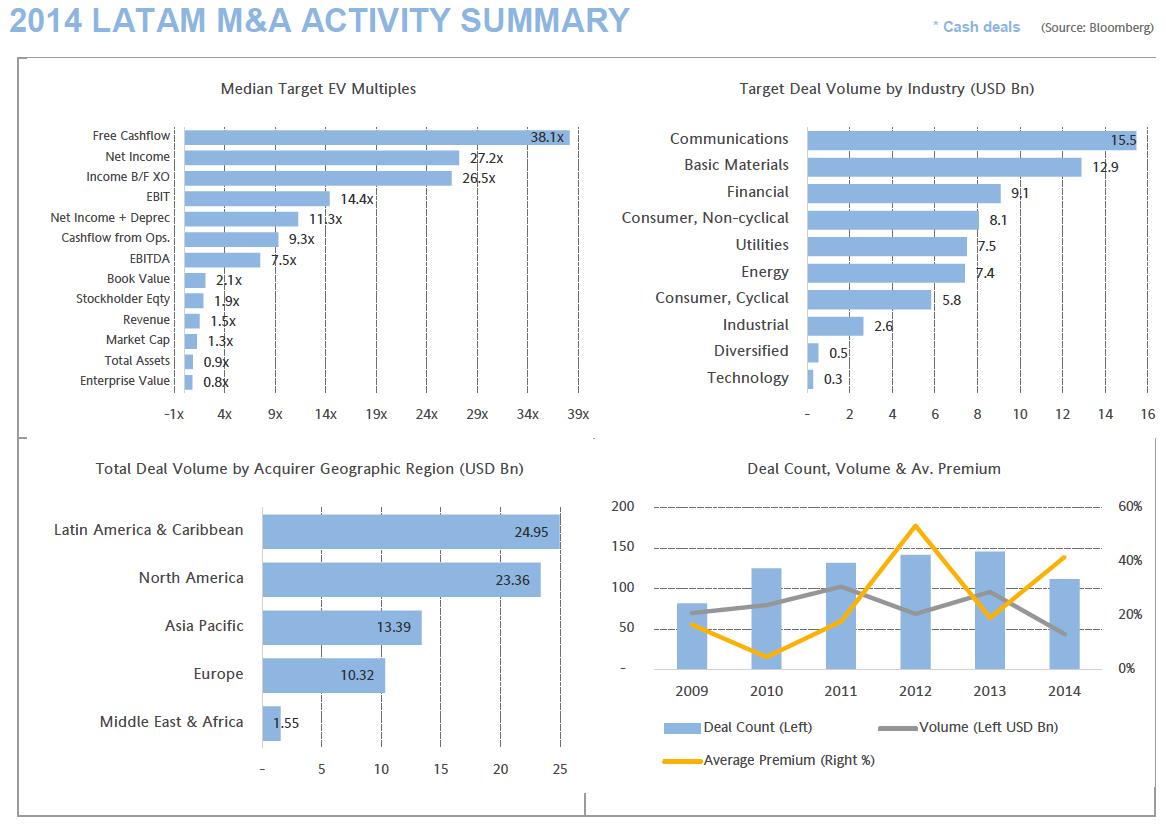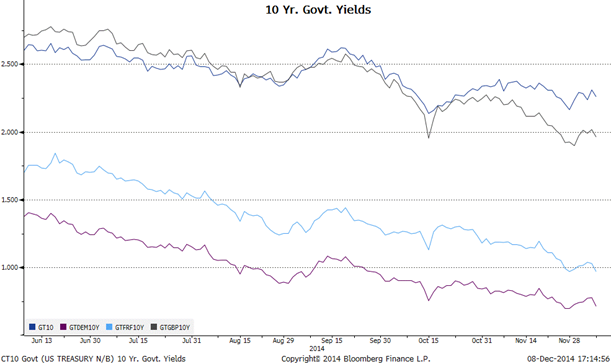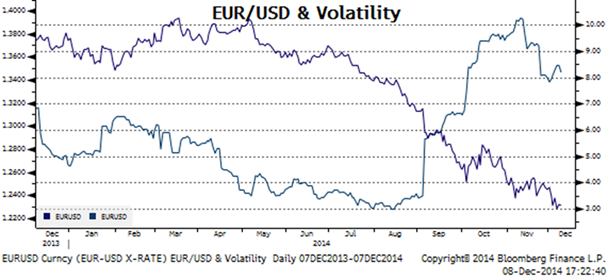2014 LATAM M&A Activity Summary
LATAM Markets
Impact on Alternative investors of increased regulation
The aggressive pace of government regulation in the United States and the E.U. of the Alternative Investments industry since the onset of the financial crisis of 2008 has had a significant impact on the industry and will continue to do so.
This is likely to affect investors in Alternatives, including hedge funds, private equity funds and other Alternative vehicles, through lower rates of return as the expense ratios of managed products increase in response to new regulations. It is also likely that smaller funds (i.e. with assets under management below $100 million) will seriously consider their viability or possibly be consolidated into larger funds.
The pace of regulation will also make it more difficult for new entrants into the funds management arena. The myriad regulations have been characterized by regulators as being in the best interest of investors and it cannot be argued that investor safeguards are always welcome, particularly for investors who give priority to capital preservation over seeking outsized rates of return.
However, the Alternatives industry was singled out by politicians and regulators in the aftermath of 2008 as the principal culprit in the collapse of global capital markets. The Madoff scandal was cited often as an example of what could go wrong without adequate supervision and regulation. To be sure, there have been notable cases of excessive leveraging in risky markets and, if there are enough of these incidents, systemic risk is inevitable. However, little mention has been made of the overwhelming majority of asset managers in the Alternatives space that have not been in trouble.
 Whether or not the Alternatives industry has been a convenient political scapegoat since 2008, the reality is that many new regulations have been enacted and the general expectation among industry players and service providers (structuring attorneys, auditors, administrators, custodians) is that more is on the way, even before the actual impact of current regulations has been fully digested by the industry.
Whether or not the Alternatives industry has been a convenient political scapegoat since 2008, the reality is that many new regulations have been enacted and the general expectation among industry players and service providers (structuring attorneys, auditors, administrators, custodians) is that more is on the way, even before the actual impact of current regulations has been fully digested by the industry.
In the U.S. asset managers with more than $150 million in assets under management must become Registered Investment Advisors, and in many cases must add new permanent staff. New regulations include, in the U.S., Form PF and FATCA.
In the E.U., there is the Alternative Investment Fund Manager Directive (AIFMD), with its Annex 4 reporting requirement. Many E.U. based managers will also need to appoint an independent Depositary (banks with large balance sheets), which will be fully liable to investors if their assets go missing. And there are others. As may be imagined, whether asset managers or the funds they manage bear the cost of engaging outside service providers to comply with the onslaught of new reporting to regulators, it is ultimately investors who will bear the cost in the form of reduced investment returns.
Going forward, investment decisions – which asset managers and/or funds to select – will require more research than in the past to understand the likely impact of regulatory matters on returns. In this environment, one viable option may be for investors to consider placing their liquid assets seeking discretionary management in a custody account with a first-tier custodian and then grant a trading authorization to the asset managers they evaluate and appoint.
Carlos E. Castellanos, Dublin
carlos.castellanos@gencapco.com
+353 085 781 8061
Near term outlook for interest and exchange rates in Europe and the United States
Underpinning the general outlook for interest rates are the growth rates in the United States and Britain, which are significantly higher than those in the E.U. as a whole.
While the United State and Britain posted increases in GDP growth in Q3 of 2014 of 2.4% and 3.0%, respectively, the Euro zone overall posted a .8% growth. Germany and France posted increases, respectively of 1.2% and .4%, while Spain, beginning to show some signs of improvement, registered growth of 1.6%. Italy remains in the doldrums, registering a decline of .4%.
In these circumstances, there is limited pressure on the European Central Bank to make any dramatic changes in monetary policy and interest rates.
While it is not clear that easing rates in the Euro zone further would be a stimulant to economic growth, raising them would likely choke off growth in an economic area that is sluggish at best. 10-year bond yields in the United States and Britain are currently around 2.25% and 2.20%, respectively, while in Germany and France they are around .75% and 1%, respectively.
In the United States, while there seems to be little appetite at the Federal Reserve for an increase in rates, there is certainly considerably less chatter in the news about Quantitative Easing than was the case in the past several years and until a few months ago.
In these circumstances, with comparative weakness in the Euro zone and little likelihood of an increase in interest rates, it is perhaps no surprise that the Euro has been under steady pressure against the U.S. dollar throughout 2014.
From close to 1.40 in the first quarter of this year, the Euro has slipped more or less steadily to around 1.25 currently. From a longer perspective, the absolute decline of the Euro against the U.S. dollar has been more dramatic, from close to 1.50 in 2011 to 1.25 currently.
Beyond economic woes in many sector of the Euro zone, Russian aggression in the Ukraine, and the fear in Germany and other Euro countries that it could spread to other regions, undoubtedly has contributed to weakness in the Euro rate and the near term outlook is for more of the same.
Carlos E. Castellanos, Dublin (carlos.castellanos@gencapco.com | +353 085 781 8061)


